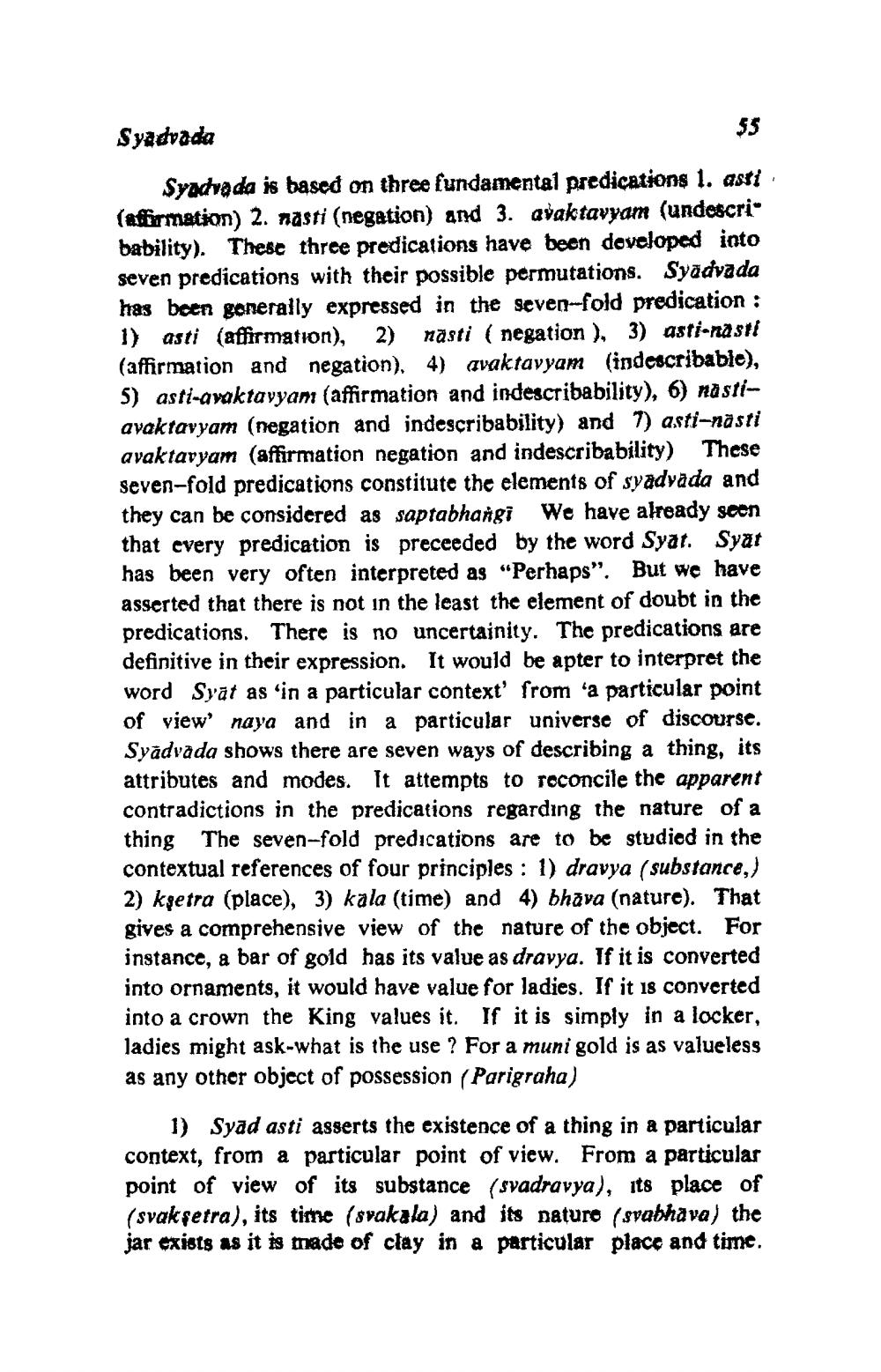________________
Syadrada
55 Syadrada is based on three fundamental predications 1. asti (affirmation) 2. nasti (negation) and 3. avaktavyam (undescri• bability). These three predications have been developed into seven predications with their possible permutations. Syadvada has been generally expressed in the seven-fold predication : 1) asti (affirmation), 2) rasti ( negation ), 3) asti-nasti (affirmation and negation), 4) avaktavyam (indescribable), 5) asti-avaktayyam (affirmation and indescribability), 6) nastiavaktavyam (negation and indescribability) and 7) asti-nasti avaktaryam (affirmation negation and indescribability) These seven-fold predications constitute the elements of syadyada and they can be considered as saptabhangi We have already seen that every predication is preceeded by the word Syat. Syat has been very often interpreted as “Perhaps". But we have asserted that there is not in the least the element of doubt in the predications. There is no uncertainity. The predications are definitive in their expression. It would be apter to interpret the word Syat as 'in a particular context' from a particular point of view' naya and in a particular universe of discourse. Syadvada shows there are seven ways of describing a thing, its attributes and modes. It attempts to reconcile the apparent contradictions in the predications regarding the nature of a thing The seven-fold predications are to be studied in the contextual references of four principles: 1) dravya (substance, 2) kşetra (place), 3) kala (time) and 4) bhava (nature). That gives a comprehensive view of the nature of the object. For instance, a bar of gold has its value as dravya. If it is converted into ornaments, it would have value for ladies. If it is converted into a crown the King values it. If it is simply in a locker, ladies might ask-what is the use ? For a muni gold is as valueless as any other object of possession (Parigraha)
1) Syad asti asserts the existence of a thing in a particular context, from a particular point of view. From a particular point of view of its substance (svadravya), its place of (svak setra), its time (svakala) and its nature (svabhava) the jar exists as it is made of clay in a particular place and time.




